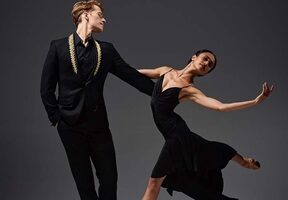 Rhino calf visible from zoo’s Wild Asia Monorail. A greater one-horned rhinoceros (Rhinoceros unicornis), or Indian rhino calf, born at the Wildlife Conservation Society’s Bronx Zoo is making its public debut in Wild Asia.
Rhino calf visible from zoo’s Wild Asia Monorail. A greater one-horned rhinoceros (Rhinoceros unicornis), or Indian rhino calf, born at the Wildlife Conservation Society’s Bronx Zoo is making its public debut in Wild Asia.
The gestation period for an Indian rhino is 16 months. The female calf weighed around 120 pounds at birth on April 6 and will grow to approximately 4,000 pounds as an adult. Her mother and father are Penny andSanjay. She is the 13th Indian rhino born at the Bronx Zoo since 1986. Exhibit times for the calf will be intermittent and will vary day-to-day.
Photo Credit: Julie Larsen Maher © Wildlife Conservation Society
Including this recent calf, there are 56 Indian rhinos in Association of Zoos and Aquariums (AZA) accredited North American zoos. This birth is part of the AZA’s Species Survival Plan, a cooperative breeding program designed to maintain genetic diversity in zoo populations of threatened and endangered species.
View the video:
{youtube}0ckbLpM1tc4{/youtube}
Video Credit: Luke Groskin © Wildlife Conservation Society
Indian rhinos are native to the grasslands and swampy areas of northern India and southern Nepal. Fewer than 3,000 are estimated to remain in the wild, with nearly 70 percent of the population living in Kaziranga National Park in India. They are generally solitary animals except when mating or when females have young offspring.
A rhino’s skin resembles armor plating, but it is more sensitive than it appears. Rhinos frequently spend time in mud wallows to cool their skin and regulate their body temperature. The mud works to protect their skin from the sun.
The rhino’s horn is made of compressed kerotin fibers, the same substance that makes up hair and fingernails in humans. Rhinos are illegally hunted for their horns, which are used in traditional medicine or used for dagger handles. Rhino populations are increasing in India due to strict regulations, but numbers are still on the decline in many areas of Nepal and Northeastern India.
Indian rhinos are designated as “vulnerable” by the International Union for Conservation of Nature (IUCN) and as “endangered” by the U.S. Fish and Wildlife Service.
The Wildlife Conservation Society’s Bronx Zoo is open daily from 10:00 a.m. to 5:00 p.m. weekdays, 5:30 p.m. weekends from April to October; 10:00 a.m. to 4:30 p.m November to March. Adult admission is $16.95, children (3-12 years old) $11.95, children under 3 are free, seniors (65+) are $14.95. Parking is $14 for cars and $16 for buses. The Bronx Zoo is conveniently located off the Bronx River Parkway at Exit 6; by train via the #2 or #5 or by bus via the #9, #12, #19, #22, MetroNorth, or BxM11 Express Bus service (from Manhattan that stops just outside the gate.) To plan your trip, visit bronxzoo.com or call 718-367-1010.
The Wildlife Conservation Society saves wildlife and wild places worldwide. We do so through science, global conservation, education and the management of the world’s largest system of urban wildlife parks, led by the flagship Bronx Zoo. Together these activities change attitudes towards nature and help people imagine wildlife and humans living in harmony. WCS is committed to this mission because it is essential to the integrity of life on Earth.
To make donations in support of helping save wildlife and wild places, please visit www.wcs.org.






